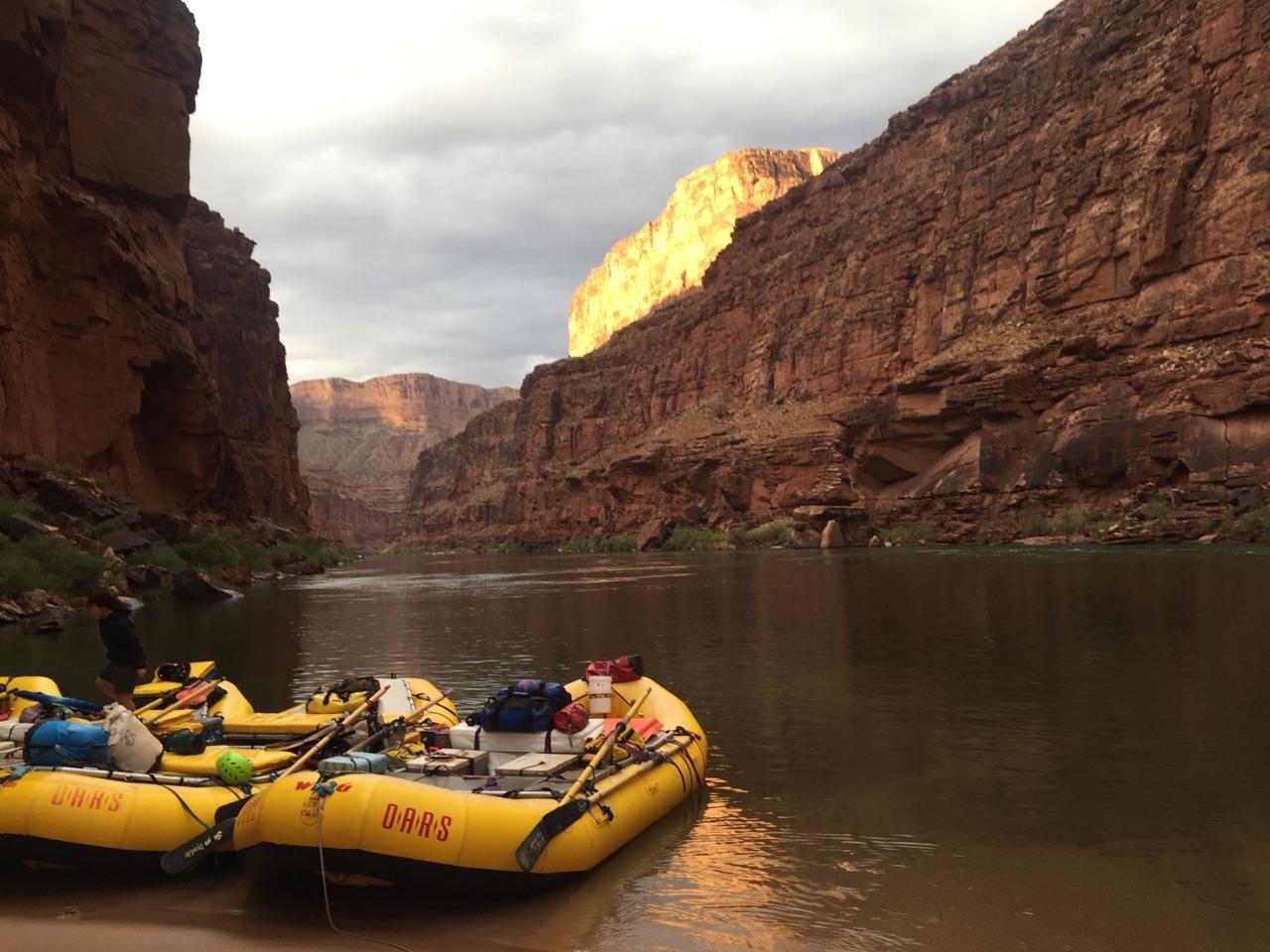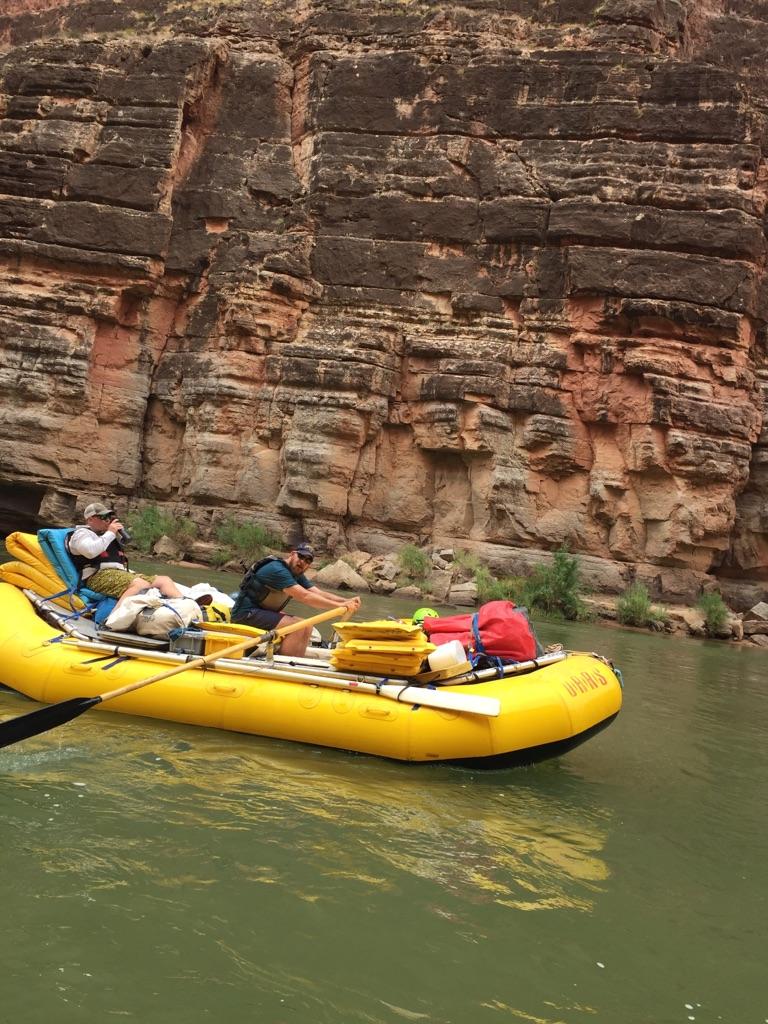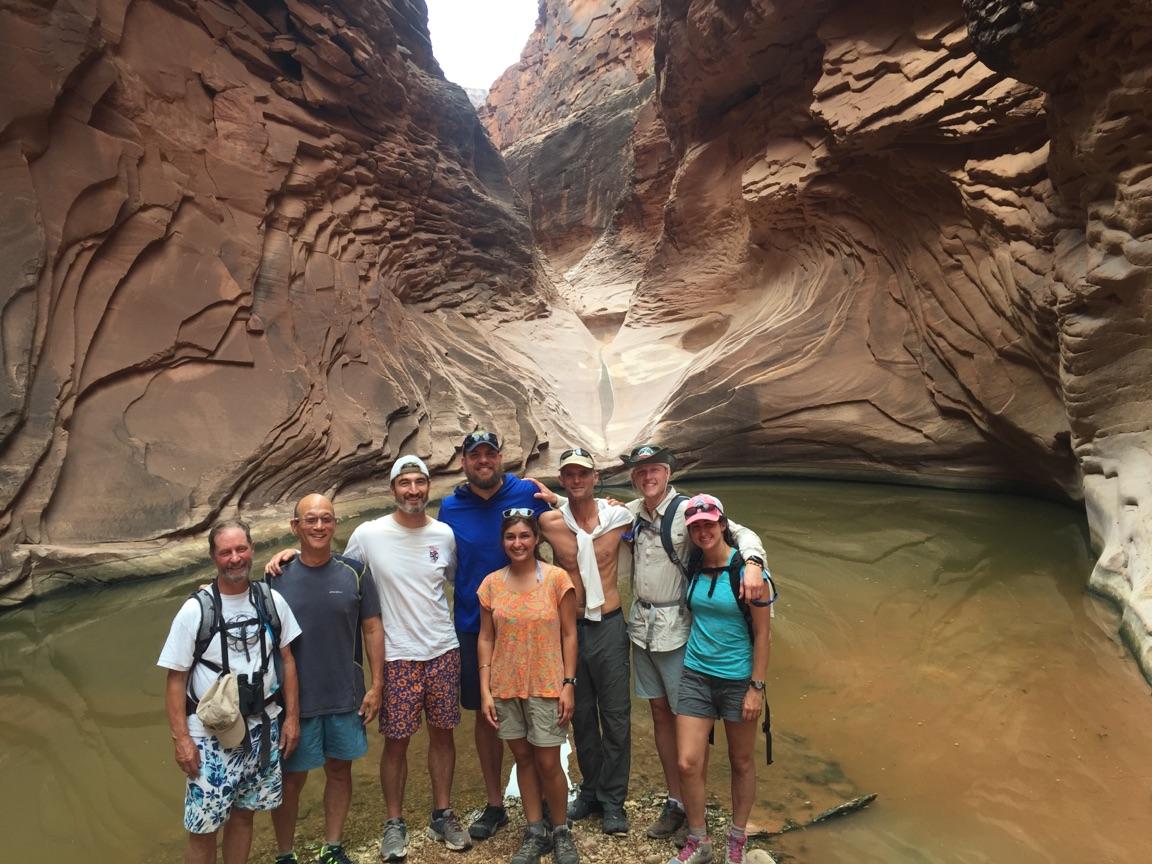This past July, the Sierra Club sponsored a group of military veterans on a rafting trip into the Grand Canyon. Those veterans included men and women representing conflicts from Vietnam through to Iraq and Afghanistan and included our own Sierra Club Outdoors director, Stacy Bare.
Over the next few days we learned much about the immense geologic history of the canyon as we traveled back through hundreds of millions of years of rock. We pushed off at Lees Ferry, Arizona, and floated under the Navajo Bridge. From there, our seasoned OARS trip leader, Andrea, told us that for the next five days we would be carried by the mighty Colorado River downstream as it cut through layers of rock and time, eventually down to the 1.8 billion years old, primeval Vishnu Schist layer. The largest and deepest canyon in the world, the Grand Canyon is truly a marvel of time, water, and rock.

As we pulled up on a sandy beach the first night to camp, we were dwarfed by towering, 300 million-year-old orange cliffs illuminated by bright moonbeams.
On day three of the trip we stopped at a narrow part of the river where man-made holes in the sheer rock walls remind travelers that there were once plans for a massive dam that would have transformed the upper part of the Grand Canyon into a large lake.
 More than fifty years ago, World War II veterans Martin Litton and David Brower joined forces to stop the proposed Marble Canyon Dam at this site. Both men mobilized people across the country to pressure the federal government not to move forward with the Marble Canyon Dam. They, like many men and women coming home from World War II and every war, found solace in the great outdoors and the very country they fought to defend. A free-flowing Colorado River should be part of the legacy of what these men and women, now and in the past, fought to defend.
More than fifty years ago, World War II veterans Martin Litton and David Brower joined forces to stop the proposed Marble Canyon Dam at this site. Both men mobilized people across the country to pressure the federal government not to move forward with the Marble Canyon Dam. They, like many men and women coming home from World War II and every war, found solace in the great outdoors and the very country they fought to defend. A free-flowing Colorado River should be part of the legacy of what these men and women, now and in the past, fought to defend.
On the fourth day we stopped at the confluence of the Little Colorado River with the “Big” Colorado River. The brilliant cobalt blue water of the river, caused by naturally leaching calcium carbonate, also supports large fish, the endangered humpback chub. This confluence is a place the Hopi, Navajo, and Zuni people hold sacred as the place of their origins. Yet this sacred place is under threat by a proposal to construct an amusement park cable tram from the top of the canyon to the confluence where a visitor center, restaurant, and other structures would be built right on the Colorado River. This could shuttle in as many as 10,000 people this area of the river that currently sees fewer than 100 visitors a day.
During our July trip, we also hiked up a number of small side canyons, and passed by washes and waterfalls that all drain the Grand Canyon watershed into the Colorado River. Much of the surrounding watershed of the Grand Canyon is highly vulnerable to uranium mines that release radiation into the water.
Due to concerns for local communities such as the Havasupai Nation, President Obama four years ago imposed a temporary moratorium on all new uranium mines for one million acres of the Grand Canyon watershed. Time is ticking away on those protections though and mining interests continue attempts to undermine them. The president could permanently protect the entire watershed by declaring a new national monument, the Greater Grand Canyon Heritage National Monument. (Join us in urging him to do so!)
What a legacy that would be, to protect the Colorado River and communities from radioactive uranium runoff! How fitting for future generations to hear the story of the Greater Grand Canyon Heritage National Monument alongside that of Marble Canyon and those stories of tribal creation as they follow - just like our veterans trip did - the history of the Grand Canyon back through time.
